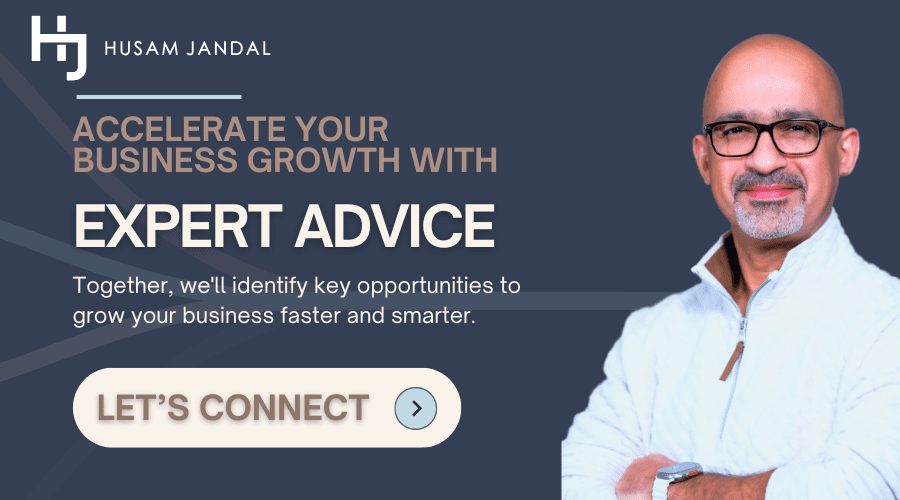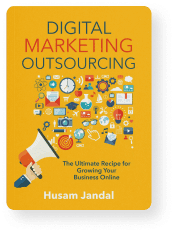 Did you know that Google Ads return an average of $2 for each $1 spent, according to the platform? The return on investment (ROI) is there, but naturally, some businesses fall well above or even below this figure. The difference between the two is often their ad campaign strategy. Give me a few minutes, and I’ll walk you through what sets the top performers apart and what you can do if you have your sights set on high-ROI advertising.
Did you know that Google Ads return an average of $2 for each $1 spent, according to the platform? The return on investment (ROI) is there, but naturally, some businesses fall well above or even below this figure. The difference between the two is often their ad campaign strategy. Give me a few minutes, and I’ll walk you through what sets the top performers apart and what you can do if you have your sights set on high-ROI advertising.
Businesses Sometimes Struggle to Obtain Long-Term Value from Ads
Paid ads, sometimes referred to as pay-per-click (PPC) ads, are prized for delivering quick wins. You’ll likely see a jump in traffic, leads, and sales when you first launch. But these early wins often fade when you aren’t treating PPC as a long-term marketing investment.
Short-Term Thinking Undermines Advertising Success
While quick wins are a major perk of paid ads, focusing solely on short-term performance limits the potential of your ad spend. Getting trapped in this mindset often leads to:
- Overemphasis on Bottom-of-Funnel Activity: Targeting people who are ready to buy may drive fast results, but it ignores the larger audience that is still in the decision phase.
- Lack of Continuity Between Campaigns: Treating each campaign as a separate push means there is no long-term system in place. Once the ads stop, results disappear.
- Missed Opportunities to Compound Gains: Without a long-term view, there is no foundation for stronger brand recognition, lower cost per lead, or higher-quality traffic over time.
Well-Crafted Ad Campaigns Are an Investment, Not an Expense
When you approach advertising as a long-term marketing investment, you start to see the full picture.
- Audience Insights Become Business Assets: Campaign data reveals who is engaging, what they care about, and how their behavior changes over time. This gives you insights for product decisions, sales strategies, and customer service improvements.
- Conversion Efficiency Improves Over Time: As your strategy matures, the cost per lead tends to decrease, and quality increases.
- Visibility Compounds Across Channels: Campaigns that reinforce your brand create familiarity. When people encounter your business later, through a referral, a sales call, or a search result, they are more likely to act.
Build an Ad Campaign Strategy That Maximizes ROI

If you want to turn a one-time boost into a reliable growth engine, you need to think of PPC as part of a long-term strategy. Let’s explore what this looks like in practice.
Identify the Right Audience for Sustainable Growth
Effective targeting is one of the most important elements of a strong ad campaign strategy. When your message reaches the right audience, everything works better, from engagement to cost per lead to long-term retention.
- Start with Clear Customer Personas: Focus on the characteristics that drive loyalty and lifetime value. These often include specific goals, industry pain points, or behaviors, not just age or location.
- Use Campaign Data to Improve Targeting: Track how different segments respond to your ads. Look at conversion rates, repeat actions, and sales patterns to refine your targeting over time.
- Prioritize Quality Over Volume: A smaller, more qualified audience often brings better results than casting a wide net. Sustainable growth comes from connecting with people who are the right fit.
Craft Ad Messaging That Converts and Builds Loyalty
The words you choose and the way you present them set expectations. If you want people to stay and listen, your messaging must speak to their needs.
- Be Specific About the Offer: Clear, direct headlines and descriptions perform better than clever phrasing. Let people know what you are offering, who it is for, and why it matters.
- Connect the Message to a Larger Value: Short-term incentives work best when paired with long-term benefits. Speak to both the immediate need and the bigger picture.
- Create a Consistent Experience: The tone, offer, and promise in your ad should match what the user sees on the landing page and hears in the sales process. Consistency builds trust and sets the foundation for loyalty.
Use Data and Optimization to Improve Ad Performance Over Time

Strong campaigns are built over time. Once the initial results come in, the next step is to review performance, make improvements, and repeat. This process helps you spend more effectively, convert more consistently, and get better results with each campaign.
Use Analytics to Improve Advertising Results
Your analytics can show how your audience responds and highlight where there are opportunities to improve.
- Prioritize Metrics That Drive Business Impact: Focus on conversion rates, customer acquisition cost, return on ad spend, and lifetime value. These indicators help you understand profitability and scale.
- Spot Gaps in the Funnel: Pay attention to where users fall off. If people click the ad but leave the landing page, the message may be unclear, or the offer may not align.
- Review Results Regularly: Set a consistent schedule for evaluating performance. Weekly or monthly reviews allow you to act on trends before they become issues.
Leverage A/B Testing to Optimize Performance
A/B testing is a key part of performance marketing. It gives you the ability to learn what works, based on results.
- Test One Change at a Time: When you run an A/B test, adjust a single variable, such as a headline or call to action, so you can clearly see what made the difference.
- Give Tests Enough Time to Run: Wait until you have a large enough sample to produce reliable insights. Premature conclusions often lead to missed opportunities.
- Apply Successful Variations Across Channels: If something performs well in one campaign, consider using it in other areas of your marketing.
Turn First-Time Ad Clicks into Long-Term Customer Relationships
To build lasting value, you need a plan for what happens next. Every ad click should lead into a broader system that reinforces your message, nurtures trust, and supports repeat engagement.
Leverage Retargeting and Email Marketing to Keep Your Brand Top of Mind
Think of the first visit to your website as a starting point. Most people will not convert the first time they see your offer, but with the right follow-up, you can continue the conversation until they are ready to take the next step.
- Use Retargeting to Re-Engage Visitors: Remind people of what they viewed and why it matters through retargeting. This works well for high-intent pages such as pricing, demo requests, or lead forms.
- Build a Targeted Email List: Offer something of value in exchange for an email address, such as a guide, quote, or tool. Use that list to educate, reinforce credibility, and introduce timely offers.
- Maintain Message Consistency: The tone, value proposition, and design should feel familiar across every channel. Consistency creates confidence and keeps your brand recognizable.
Prioritize High-Value Customers to Maximize Advertising ROI
Certain customers will bring more value to your business over time than others. They may make larger purchases, return more often, and introduce you to others in their network. When your ad campaigns are designed to reach and retain these customers, your return on investment increases, and your business becomes easier to scale.
- Define What High Value Looks Like: This might include larger average order value, longer retention, stronger upsell potential, or frequent referrals.
- Tailor Messaging and Offers Accordingly: Speak directly to their goals and challenges. Offer upgrades, loyalty rewards, or early access that adds value to their experience.
- Invest in Their Journey Beyond the Sale: Keep providing value after the initial conversion. Follow-up support, relevant content, and periodic check-ins can deepen the relationship and increase lifetime value.
Create a Sustainable Advertising Strategy That Drives Growth
To grow consistently, you’ll need to develop a system that produces results month after month, built on smart investments, clear messaging, and disciplined reinvestment.
Structure Ad Investments for Scalable Growth
A structured approach to budgeting gives you room to grow without losing visibility into results. As campaigns improve, your investment strategy should evolve with them.
- Allocate Budget Based on Results: When certain channels or audiences perform well, increase funding in those areas to improve efficiency and reach.
- Adjust Goals as the Business Grows: Your early campaigns may focus on visibility or lead volume. As the business matures, shift the focus to lead quality, return on investment, or customer lifetime value.
- Create Space for Testing: Reserve a portion of the budget to explore new ideas while maintaining consistent support for what delivers steady results.
Reinforce Brand Trust Through Consistent Messaging

Your ads are often the first impression people have of your business. When messaging stays consistent from one campaign to the next, it becomes easier for prospects to recognize your brand, trust what you offer, and remember you later.
- Lead with a Clear Value Proposition: Be specific about who you help and what problem you solve. That clarity builds trust faster than broad, generic statements.
- Match the Tone Across Channels: From your ads to your landing pages to your emails, the experience should feel cohesive and familiar.
- Support Your Message with Proof: Customer testimonials, data points, and case studies add credibility. They show that your offer delivers results.
Reinvest Ad Profits to Drive Continued Success
When a campaign performs well, the revenue it generates gives you options. Reinvesting those funds into new campaigns, better creative, or stronger customer experiences can create a powerful growth cycle.
- Expand What Works: Increase investment in high-performing campaigns or audiences to extend reach and improve return.
- Upgrade Supporting Assets: Use revenue to improve website performance, develop new content, or create visuals that increase engagement.
- Enhance the Customer Journey: Apply a portion of the gains toward service improvements, loyalty programs, or educational content that helps customers stay longer.
Get Help Improving Your Ad Campaign Strategy
As someone who was once responsible for educating Google Partners—professionals responsible for managing ads for businesses—I’ve personally seen paid advertising work for just about every type of business imaginable. I’ve also seen where businesses and even professionals fall short in their strategies. If you’d like a well-rounded and integrated approach to digital marketing, including a strong ad campaign strategy, let’s talk.
Ad Campaign Strategy FAQs
What are the best strategies for maximizing ad ROI?
To maximize ad ROI, focus on targeting high-value audiences, using clear messaging, and refining campaigns based on performance data. Combine short-term tactics with long-term goals, test frequently, and invest in channels that consistently deliver strong conversion and retention metrics.
How do you create an ad campaign that sustains revenue growth?
Start with a clear objective, identify the right audience, and use messaging that supports both immediate action and brand loyalty. Monitor results closely, reinvest in what performs well, and build a system that continually adapts to customer behavior and business goals.
How can businesses balance short-term ad spend with long-term growth?
Businesses can balance short-term spend with long-term growth by allocating most of the budget to proven campaigns while reserving a portion for brand-building and testing. This approach supports immediate goals while laying the groundwork for ongoing customer acquisition and retention.
Why do some ad campaigns fail while others succeed?
Campaigns often fail due to unclear targeting, weak messaging, or poor follow-up. Successful ones align strategy with customer needs, optimize through data, and reinforce value at each stage of the journey. Consistency and clarity are key to long-term performance.
How does retargeting impact ad performance?
Retargeting improves ad performance by re-engaging users who have already shown interest. It keeps your brand top of mind, reinforces messaging, and increases the likelihood of conversion by reminding prospects of your value at multiple points in the decision process.
What are the key components of a sustainable ad campaign?
A sustainable ad campaign includes clear goals, accurate targeting, consistent messaging, and regular optimization. It also involves long-term planning, reinvestment of profits, and alignment with your overall brand strategy to support ongoing growth and stronger customer relationships.
How does customer lifetime value influence ad budget decisions?
Customer lifetime value helps determine how much you can reasonably spend to acquire and retain a customer. When lifetime value is high, it justifies higher ad spend, allowing businesses to scale faster while maintaining profitability and investing in customer retention.
How do businesses determine the right ad budget for long-term success?
The right budget is based on your growth goals, customer acquisition costs, and expected lifetime value. Start by funding high-performing campaigns, then scale gradually. Include room for testing and brand-building to support both immediate performance and sustained growth.
What metrics should be tracked to measure ad campaign effectiveness?
Key metrics include conversion rate, customer acquisition cost, return on ad spend, and lifetime value. You should also monitor engagement, bounce rates, and funnel drop-offs to understand where to improve and how each element of your campaign contributes to results.
How do different ad platforms compare in long-term ROI?
Long-term ROI varies by platform and industry. Search ads often deliver strong intent-based conversions, while social platforms support brand visibility and retargeting. The best results usually come from integrating multiple platforms, then optimizing each based on performance and audience behavior.
What psychological triggers help increase ad performance?
Triggers such as social proof, urgency, exclusivity, and clarity improve ad performance. When combined with relevant messaging and a strong value proposition, these elements increase engagement, reduce hesitation, and guide prospects toward action more effectively.
How can AI and automation improve ad campaign efficiency?
You can use AI and automation to streamline tasks like audience targeting, bid adjustments, and performance analysis. This leads to faster optimizations, lower costs, and better scaling. When used well, automation frees up resources and improves overall campaign performance with less manual oversight.





































































